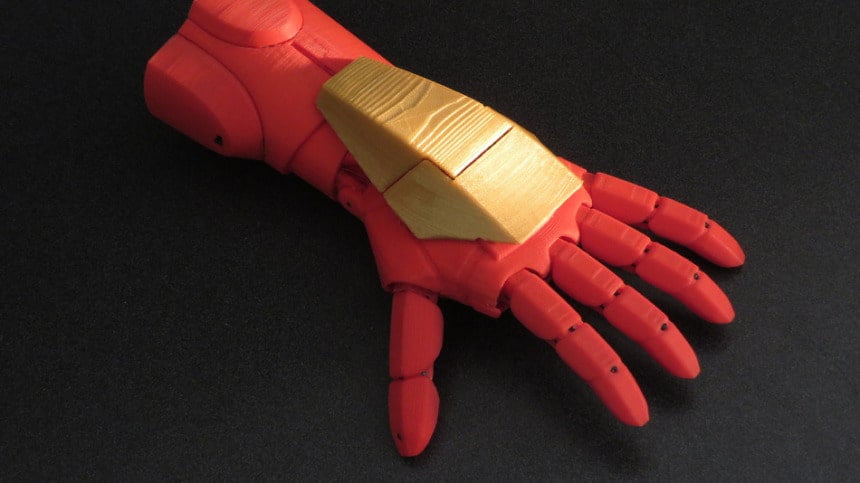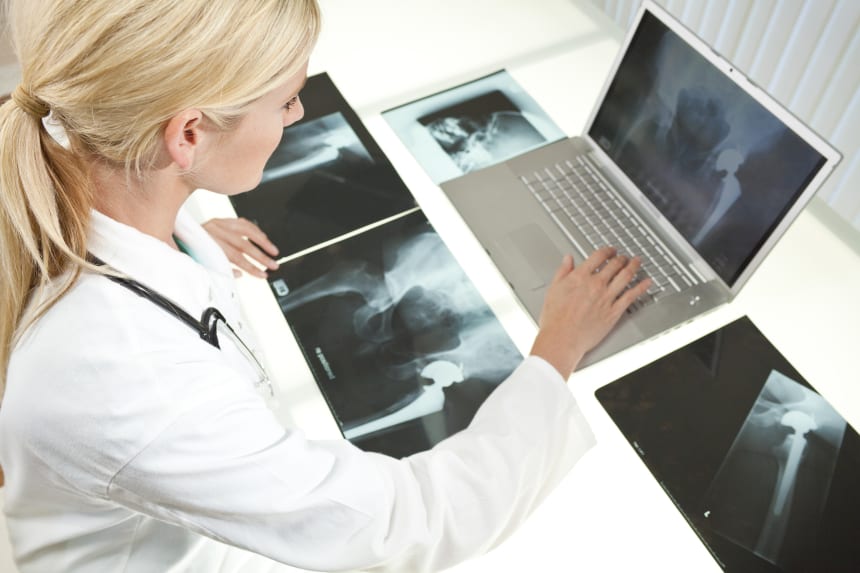Over the years, technological advancements have changed the face of healthcare. With everything from needle-free diabetes care, robotic check-ups, electronic diagnoses and customizable prostheses, technology has undoubtedly made an impact on the healthcare field.
The latest technology to make a significant impact on healthcare is 3D printing, and it’s ushering in the era of personalized medicine. The rapid growth of 3D printing brought the ability to create replacement organs, medical devices and surgical models. And although 3D printing is being used for various healthcare applications, many people in the medical field are using 3D printers to create things like prosthetic body parts, implants, and medical treatments.
Here are the top 3D printed medical advancements that have recently captured my attention, and the role I see HP playing in the future of 3D printing:
3D-printed prosthetic limbs
3D printing is unlocking new possibilities in prosthetics. The major downfall of current prosthetic devices is the fact they aren’t particularly stylish. In fact, some people describe them as something right out of a science-fiction movie. Thanks to 3D printing, people in need of prosthetic limbs are able to have a custom-designed prosthesis.

Photo credit: patstarace.com
Pat Starace developed the ultimate kid-friendly prosthetic – the IRON MAN 3D Printed Child’s Prosthetic Hand. Starace based the prosthetic hand on the Marvel superhero, Iron Man. Starace wanted to create a hand that solved the child’s mechanical challenge, was affordable and most importantly, “looked awesome”.
Along with the features we’ve come to expect from prosthetic limbs, the IRON MAN hand is outfitted with a Bluetooth connection, sensors that can react to specific movements, and NinjaFLEX Finger Tips for a superhero-style grip.
In addition to cool, kid-friendly designs, 3D-printed prosthesis can also meet people’s specific functional needs. Diego, a teenager in Colombia, wanted to play guitar, but lost his right hand at birth. A group of makers built a custom prosthetic that allowed him to play guitar. The interesting thing about this prosthetic is that it didn’t need to look like a hand and therefore the group of makers were able to experiment with the shape. After several iterations, they settled on a shield to place over his arm with a pair of pinchers to hold the pick.
The simple prosthetic hand cost only $50, but increased his quality of life dramatically and allowed him to learn how to play the electric guitar.
The cost of 3D-printed replacement limbs is an important factor – especially for children who frequently outgrow their prostheses. Alex, a boy in Florida, was born without a right arm, but his family was struggling to find a way to afford the prosthetic limb he needed. Ph.D. students from the University of Central Florida were inspired to created a 3D-printed arm for him. Within a few weeks they had a final product that cost $350 and could run for an entire day off one battery charge.
The students also put the plans of the design online so that others can download them for free and hopefully carry out improvements. With this style of collaboration, the possibilities are endless for the future of prostheses.
3D-printed hip replacements
According to the Agency for Healthcare Research and Quality, more than 285,000 total hip replacements are performed in the United States each year. Surprisingly, approximately 8 percent of these cases are classified as a failure because of an infection. Patients with infections must go through another surgery to remove the infected implant and replace it with another. However, the second surgery tends to have a low rate of success.

An experimental technology is looking to solve that problem by using 3D printing and cutting-edge tissue engineering to improve the success rate of secondary surgeries. During the surgery, the ball-and-socket prosthesis and the infected bone are removed. However, the removal of the bone reduces the chances of the second implant working for the patient.
To solve this issue, doctors used antibiotic-laced bone cement to create a temporary spacer. This spacer eliminates the infection and therefore increases the success of the second surgery.
Scientists are now using 3D printing to customize the spacer for each patient. 3D printing also allowed researchers to infuse the spacer with antibiotics and biologically-active compounds to boost the regrowth of bone.
In addition, scientists hope to be able to alter the thickness of the spacer in order to improve its compatibility with human tissues.
3D-printed cancer treatments
British scientists recently used 3D printing to create a personalized model of cancerous parts of the body so that doctors can target tumors more precisely.
So how does it work? 3D phantom tumors and organs are made based on CT scans taken of the patients. The plastic models are then filled with liquid, which allows the medical professionals to see in detail the flow of drugs containing radioactive material and fine-tune dosing.
If treatment is personalized according to the radiation dose delivered to the tumor, there should be a better outcome.
HP’s role in the future of 3D printing
At HP, we see a great opportunity to contribute to the art of 3D printing. We’re bringing this vision to life with Multi Jet Fusion. It’s our revolutionary technology engineered to resolve critical gaps in the combination of speed, quality and cost, and deliver on the potential of 3D printing. These improvements could certainly help make 3D-printed prosthetics more accessible and easier to create.
Our printing technology also delivers the ability to create single-printed pieces in different colors and textures to ensure the 3D-printed pieces are only be limited by the creator’s imagination.
So whether it is in the medical field or elsewhere, our goal is to spur a new wave of growth and innovation with this additive manufacturing.
